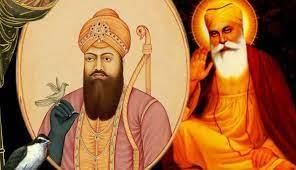Class 1 Exam > Class 1 Notes > General Knowledge for Young Learners > Religions in India
Religions in India | General Knowledge for Young Learners - Class 1 PDF Download
Religion in India
- The Indian Government is not bound by a particular religious belief system.
- There are a large number of different religions in India.
- There is the presence of innumerable different faiths and sects.
- History rich in different cultures and civilisations have added to this number.
- Followers of various religions have diverse social compositions.
- Hinduism is the major religion practised by 80% population.

Types of Religion in India
- Certain religions emerged due to the protest against dominant Hinduism, these included Jainism, Buddhism, and Sikhism.
- Religious belief systems formed due to conquest or colonization included Islam and Christianity.
- Migrant religious groups were Jews, Zoroastrians and the followers of Bahai faith.
Hinduism

- Hinduism is one of the most popular religions in the country, but it encompasses a wide range of cults and sects.
- Hinduism is derived from the word 'Hindu,' which was intended to refer to people who lived in the geographical area surrounding the Indus River.
- At its most fundamental level, Hinduism borrows fundamental principles from pre-Vedic and Vedic religious philosophies.
- The origin of Hinduism was seen during 2000 BC when Aryans settled along the banks of the river Indus river.
- “Hindu” traces its origin from the river Indus which flows through northern India.
- The Indus river was known as ‘Sindhu’ in earlier times.
- However, Persians who migrated to India called the river Indus as ‘Hindu’, it's land ‘Hindustan’, and its inhabitants as Hindus.
- Therefore followers of this religion came to be known as Hindus.
Brahmo Samaj

- It started with Raja Rammohan Roy, who wanted to question Hinduism's problems.
- In order to address these issues and discover the truth of Vedanta, he founded the Brahmo Samaj in 1828.
- It was opposed to iconography and the worship of any kind of imagery.
- It spoke out against Sati's evil practices, which were later abolished after years of campaigning.
- Two schools were established by him to bring education to the masses.
Arya Samaj / Shramana

- Swami Dayanand Saraswati founded it with the goal of reviving Hinduism from within.
- They believed in the Vedas' supremacy and claimed that they were the repository of all values and knowledge.
- One of their main policies was to work for the good of humanity.
- They believed in the importance of education for the masses and established a large number of schools.
- They practised iconoclasm and sought to convert non-Hindus to Hinduism.
- He initiated the Suddhi, or purification, movement, which enabled the conversion to take place.
Jainism

- The term 'Jain' is derived from the word jina or jaina, which means 'Conqueror.'
- They believe that their religion is made up of people who have conquered and controlled their desires.
- Jainism does not have a single founder; rather, the truth is brought to the world in difficult and varied times by a teacher who shows the way, known as a Tirthankara.
- Before Mahavira, the Jain religion had 23 Tirthankaras, or great-learned men.
- It is commonly assumed that Mahavira was the founder of Jainism; however, he was the 24th and final tirthankara.
- He would achieve his spiritual goal and teach others how to achieve moksha, or liberation.
- Jainism, like Buddhism, rejects Vedic authority.
- However, it believes in the existence of a soul (atman). The soul is the central and primary focus of Jain philosophy.
- It is the soul that experiences existence and gains knowledge, not the mind or the body, which are both thought to be a mass of matter.
- Jainism preached compassion and love for all forms of life.
- Most of the preachings of Jainism were done in the language of common masses.
- They rejected the use of Sanskrit, a Brahminic language.
Buddhism

- It is one of the world's major religions that originated in the Indian subcontinent and has since spread to large parts of South-east Asia.
- The storey of Siddhartha, who became known as Buddha, is linked to the origins of Buddhism.
- Buddhism's traditions, beliefs, and practises are all attributed to Buddha.
- After Christianity, Islam, and Hinduism, it is the world's fourth largest religion.
- Buddhism is practised by approximately 7% of the world's population.
- Buddhists account for 0.7 percent of India's population, or 8.4 million people, with the majority living in Maharashtra.
- It is based on a system of philosophy and a code of morality.
- Its basic philosophy consists of four noble truths given by Buddha.
- Buddhism grew rapidly when it was patronized by Emperor Asoka.
Sikhism

- Sikhism's history begins with Guru Nanak's life, times, and teachings (1469-1539).
- He was a nonconformist with a different point of view. He waged a concerted campaign against Hinduism.
- He not only criticised the existing way of life for the people of Punjab, but he also provided an alternative method of socio-religious organisation for his followers.
- He regulated his followers' community life by introducing congregational worship in a dharamsala and communal dining to bring people together.
- Guru Nanak did not simply criticise or condemn the existing social order; he proposed an alternative.
- The supreme purpose of human existence, according to him, is salvation, which can be attained by being freed from the endless cycles of birth and rebirth.
Islam

- Islam emerged in the Arabian Peninsula in the seventh century AD and spread throughout the world via a vast empire.
- The word "Islam" means "submission" to God
- Muslims are those who submit to God and follow the teachings of Prophet Muhammad.
- Prophet Muhammad was the last of God's messengers on Earth, following in the footsteps of Abraham, Moses, and others.
- Abraham is a common ancestor for both Christians and Muslims.
- Islam has two main sects called Sunni and Shia Muslims with various other minor sects.
Christianity

- Christianity, one of the world's largest religions, has a sizable following in India.
- It was founded by Jesus Christ in Jerusalem, and after his trial and resurrection three days later, it grew in popularity.
- After a while, it became the Roman Empire's official religion and spread rapidly. Vatican City became the foundation of Roman Catholic Christianity.
- After a while, there were several reform movements in Christianity, and sects such as Protestants, Methodists, and so on became popular.
- The central tenet of Christianity is the existence of a single God who created the universe.
- When it is necessary, God sends messengers or messiah(s) to assist his creation.
Zoroastrianism

- This religion was founded in Persia around 6-7 BCE by the prophet Zarathustra.
- They are a monotheistic religion that believes in one eternal god, Ahura Mazda, who is the epitome of justice and goodness.
- Angra Mainyu is the name of a spirit of malice and bad behaviour.
- These two continue to fight each other in an eternal battle, and one day, good will triumph over evil, and that will be the last day.
- The Zoroastrians first made contact with India in 936 AD, when they fled Iran due to Islamic invasions.
- They are commonly referred to as Parsis and are currently one of India's smallest (and rapidly shrinking) communities.
- They primarily reside in Mumbai, Goa, and Ahmedabad.
- Their fire temples, known as Atash Bahram, are extremely rare, with only eight known temples in the entire country.
Judaism

- It is one of the oldest religions, yet it has been the most persecuted.
- Jews are adherents of Judaism, and they have been targeted by several empires.
- The worst example was Hitler, who slaughtered and tortured millions of Jews in Germany.
- This, too, is a monotheistic religion that believes in a single God.
- Their religion predates Christianity and Islam, and both have borrowed heavily from Judaic philosophies.
- The Jews believe in Yahweh, or the one and only true God, who was established by Abraham.
Sufism

- Sufism is Islam's mystical branch. Sufis represent the innermost tenets of Islam (tasawwuf).
- It emphasises self-awareness, tolerance, righteousness, and universal love for all.
- The word derives from the Arabic word for wool (suf), which refers to the rough wool garments worn by ascetics and even prophets.
- Sufism is sometimes traced back to the root word saf, which means purity in Arabic.
- Due to the increasing materialism of the Caliphate, some religious people in Persia turned to asceticism at the beginning of 12 AD. They became known as 'Sufis.'
Conclusion
Religion is a very powerful tool in the hands of the powerful, and it is used to break and make communal ties, but India has typically had more years of religious peace than instances of communal tensions. Harmonious relations among religions leads to increased tolerance and promotes secularism. There should be promotion of some level of unity, cooperation and improved understanding between different religions and different sects of religion by means of inter-religious dialogue.
The document Religions in India | General Knowledge for Young Learners - Class 1 is a part of the Class 1 Course General Knowledge for Young Learners.
All you need of Class 1 at this link: Class 1
|
64 videos|153 docs|40 tests
|
Related Searches






















